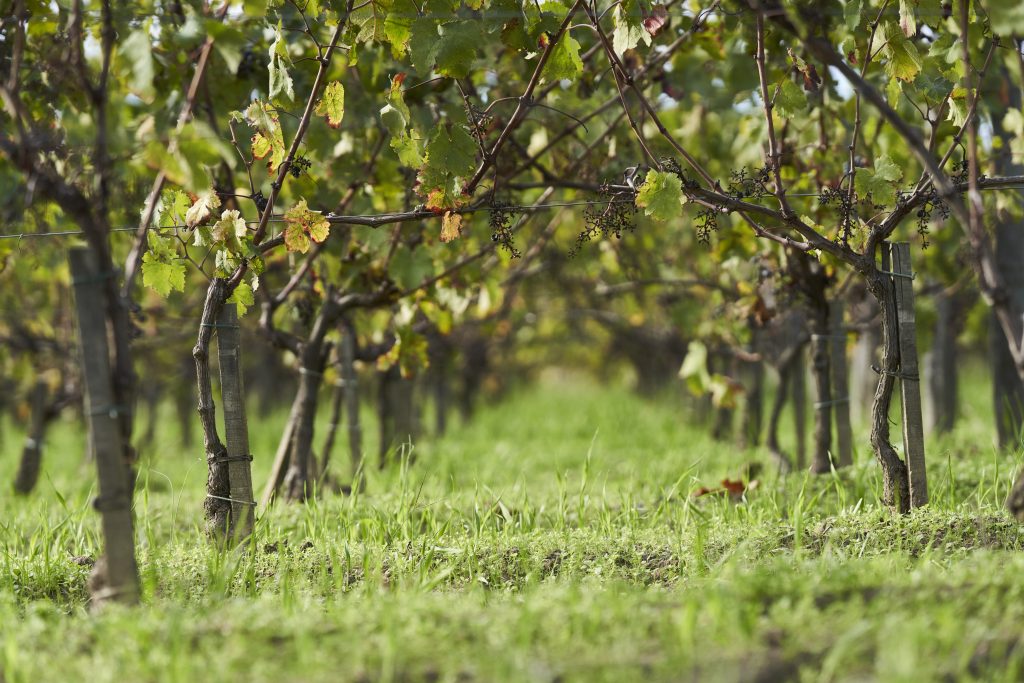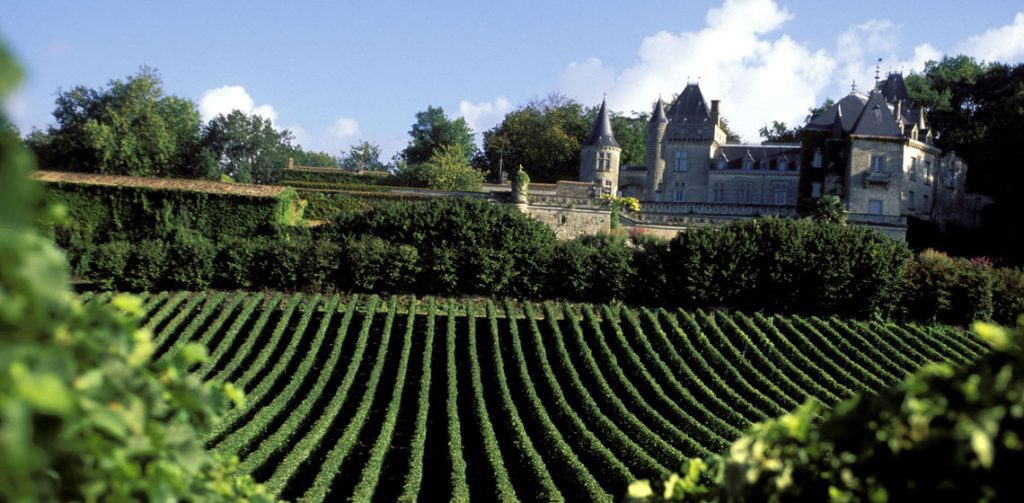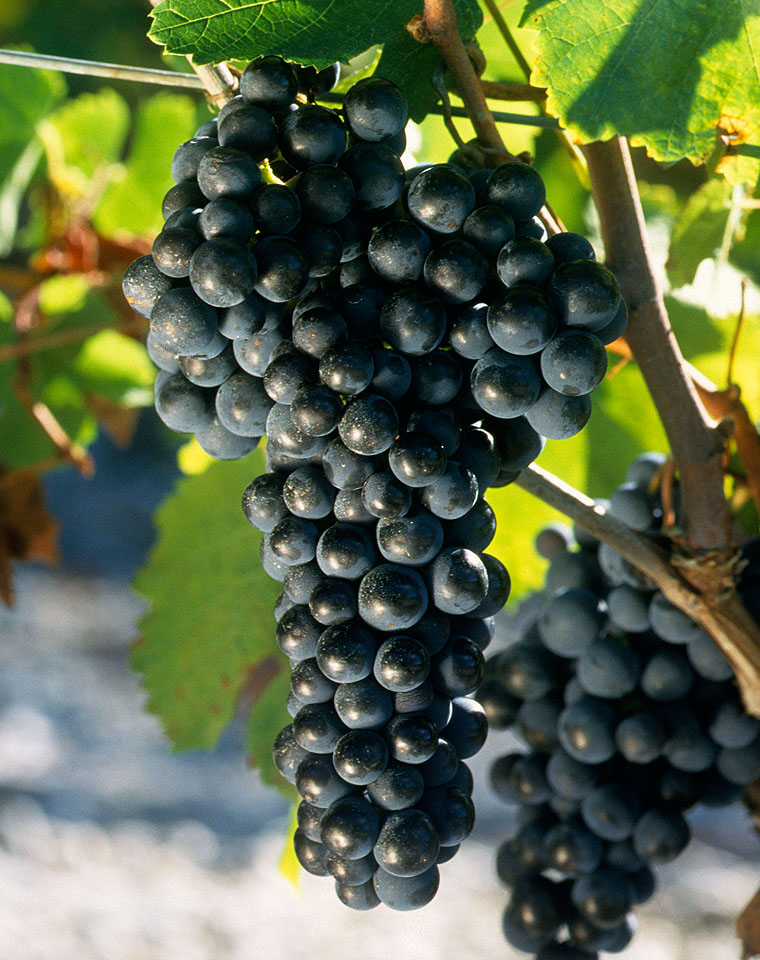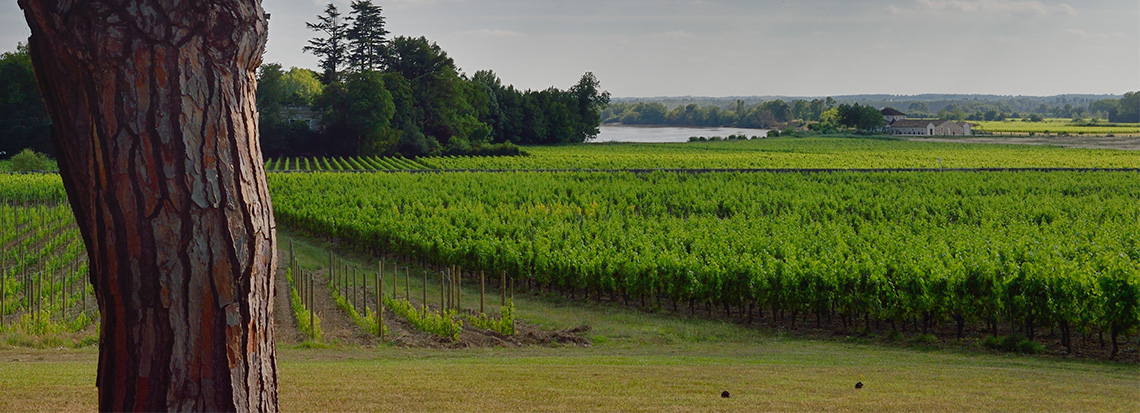Photo credit: CIVB
In the shadow of Saint-Émilion and Pomerol lies a treasure waiting to be discovered by wine enthusiasts. Fronsac, with its rolling limestone hills and ancient winemaking heritage, produces some of Bordeaux’s most compelling yet undervalued Merlot-based blends from around 2,000 acres of vines in the Right Bank. These wines whisper stories of Roman conquerors, royal courts, and resilient winemakers who have preserved a tradition spanning millennia.
Fronsac’s Roman Roots

Photo credit: CIVB
Fronsac’s winemaking history stretches back to Roman times, when vines were first planted on its distinctive limestone slopes overlooking the confluence of the Dordogne and Isle rivers. The region’s fortunes have risen and fallen through the centuries like the tides of the nearby Gironde estuary. During the Middle Ages, a fortress built by Charlemagne himself crowned these hills, while the 17th century brought unexpected fame when Cardinal Richelieu acquired estates here. The Cardinal’s influence elevated Fronsac wines to the royal court, where they outshone their neighbors from Saint-Émilion and Pomerol—a fact that might surprise modern wine lovers. The Duke of Richelieu later built a theater in these hills specifically to entertain Louis XIV and his entourage when they visited, cementing Fronsac’s reputation as a place of both viticultural and cultural significance.
The late 19th century brought challenges in the form of phylloxera, a pest that devastated vineyards throughout Europe. Many Fronsac producers, lacking the resources of more famous estates, replanted in less ideal lowland areas where the pest couldn’t survive, but where wine quality suffered. This period marked the beginning of Fronsac’s fade from prominence, from which it has only recently awakened. Today’s renaissance is driven by a new generation of passionate winemakers who have rediscovered the region’s exceptional terroir and are combining traditional knowledge with modern techniques to craft wines of remarkable character.
Soil, Slopes and Sunshine

Photo credit: CIVB
What makes Fronsac special among Bordeaux appellations is its distinctive landscape and soil composition. The region features plateaus and slopes, a rarity in Bordeaux, along with clay-limestone soils locally known as “molasses du Fronsadais.” Walking through these vineyards, one feels the history beneath their feet—the same calcium-rich earth that has nourished vines for over two thousand years. This soil composition, combined with excellent drainage from the hillside vineyards and the moderating influence of the nearby rivers, creates ideal conditions for growing Merlot. The limestone provides a natural water regulation system, cooling the vines during hot summers and imparting a distinctive mineral character to the wines that speaks clearly of their origin.
Merlot reigns supreme here, comprising about 78% of plantings and bringing its characteristic plummy richness and velvety texture to every red blend. Cabernet Franc (13%) adds aromatic complexity and structure, while Cabernet Sauvignon (7%) contributes additional backbone and aging potential. The resulting wines offer a balance of accessibility and complexity—approachable enough to enjoy in their youth but with the structure to develop beautifully over time. A well-made Fronsac typically presents notes of dark cherries and plums, often accompanied by chocolate, spice, and a distinctive mineral undercurrent that speaks of those limestone soils. The tannins are typically silky yet substantial, providing the structure necessary for aging while remaining less austere than those found in the Médoc.
Fronsac Wines Near You

Photo credit: CIVB
Perhaps most remarkably in today’s market, Fronsac offers exceptional value. These wines frequently deliver quality comparable to their more famous neighbors at a fraction of the price—a secret that Bordeaux lovers have kept to themselves for too long. As climate change continues to impact wine regions worldwide, Fronsac has another advantage: its limestone soils help maintain freshness and balance even in hot vintages, making it increasingly relevant today.
For those eager to explore this hidden corner of Bordeaux, here are four outstanding Fronsac wines available in the U.S.:
- Château de La Dauphine: A historic estate dating to the 18th century, now practicing organic and biodynamic viticulture. Expect silky tannins and beautiful depth, with notes of black cherry, plum, and subtle spice that unfold slowly in the glass.
- Château La Brande: A medium to full-bodied palate that is perfectly balanced, with seamless integration of racy acidity and refined tannins.
- Château Fontenil: The wine is energetic, elegant and pure. There is a salty note on the back end that fades just as the refreshing nuance of spearmint comes in.
- Château La Vieille Cure: From a benchmark producer on the right bank of Bordeaux. Big, full bodied and voluptuous in texture, this is no shy wine.
Next time you find yourself browsing the Bordeaux section, try one of these treasures from Fronsac. In each bottle, you’ll find a taste of history: the legacy of Romans and royalty, of resilient winemakers and limestone hills, of a place that has quietly preserved its identity while the spotlight shone elsewhere.
Find an event or tasting near you on our Events page and keep up with the latest in Bordeaux wine by following Clink Different on Instagram and Facebook.
